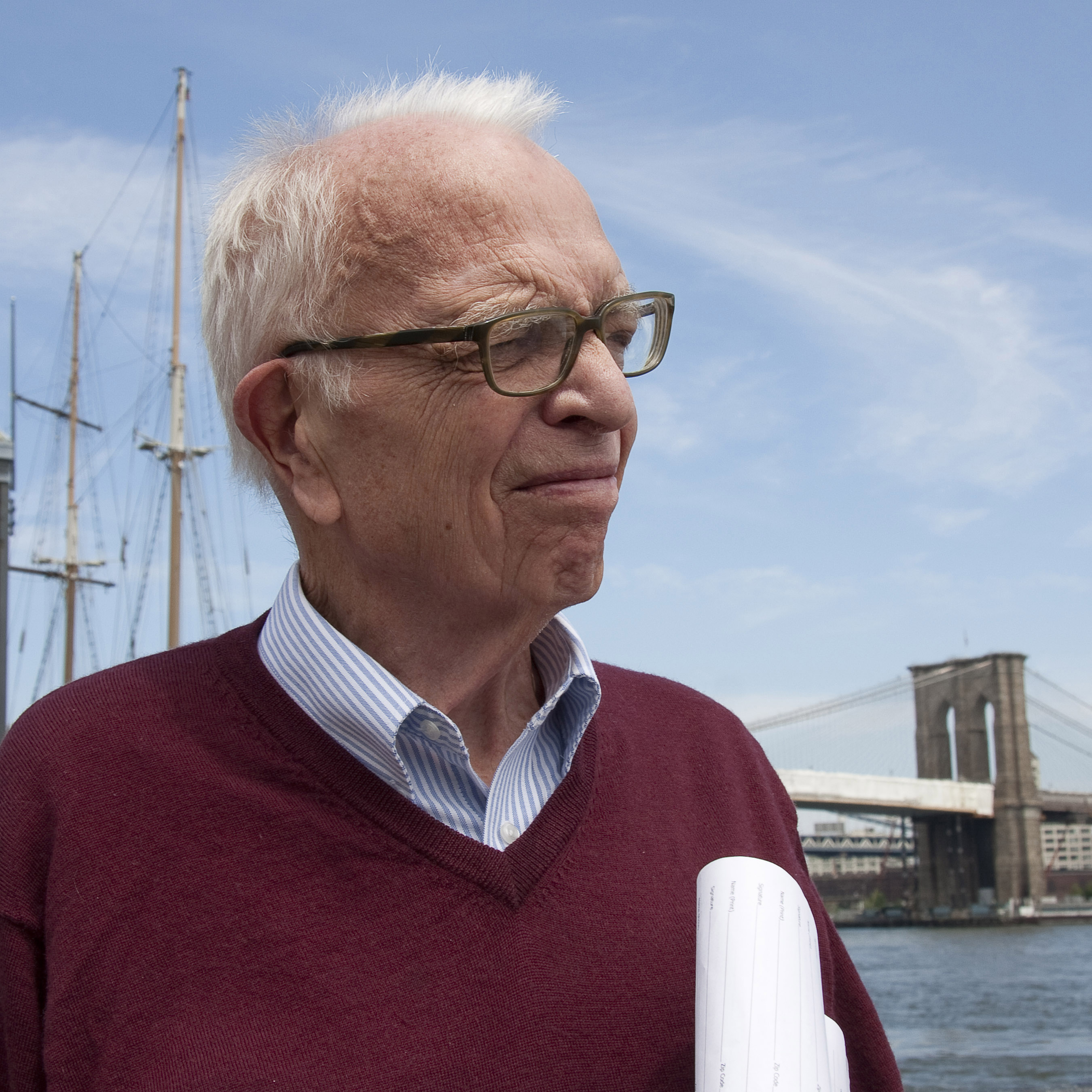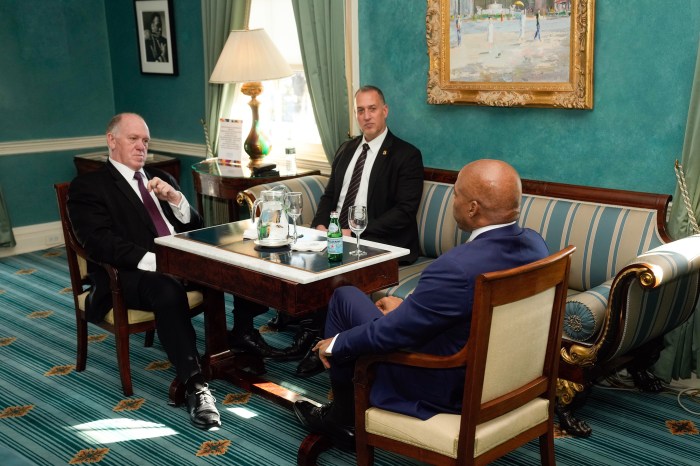
Peter Stanford, founder of the South Street Seaport Museum, died on Mar. 24, aged 89.
BY YANNIC RACK
Peter Stanford, the founding president of the South Street Seaport Museum and a tireless advocate for preserving New York City’s maritime history and historic waterfront, died on Mar. 24 in Croton-on-Hudson, N.Y. at the age of 89. The cause was a stroke, said his wife, Norma.
Beginning in the 1960s, Stanford played a pivotal role in saving the city’s old sailing ship waterfront by creating the Seaport museum, and leading the fight to preserve the old brick buildings around the Fulton Fish Market, including iconic Schermerhorn Row, in a historic district at a time of extensive new office construction in Lower Manhattan.
“In entirely plain terms, there’d be nothing left to preserve here in the Seaport were it not for Peter’s work,” said Capt. Jonathan Boulware, the museum’s current executive director. “[The New York Times architectural critic] Ada Louise Huxtable paved the way in a sense, but it was Peter — and others, including his wife Norma — who made what has happened here over the past 50 years possible.”

Peter Stanford and his wife Norma founded the South Street Seaport Museum together.
From the time they founded the Friends of South Street together in 1966, the Stanfords embarked on a quest to transform the city’s original port into a world-class destination, and eventually achieved landmark status for the historic spot south of the Brooklyn Bridge.
Stanford led campaigns to save the historic vessels berthed at South St., including the lightship Ambrose, which is still at the Seaport, the four-masted barque Peking, which will sail away to a new home in Germany later this spring, and the Wavertree, a sailing ship that is currently undergoing a $13 million city-funded restoration and will return to its berth this summer.
In his role at the museum and as the president of the National Maritime Historical Society, Stanford also helped organize the fleet of ships that sailed New York Harbor to celebrate the country’s bicentennial in 1976 and the Statue of Liberty’s centennial in 1986.
In 2011, after the museum almost closed amid financial strain and supporters started calling for the ouster of the institution’s then-leadership, Stanford, 84 and walking with a cane, attended a rally organized by a group he co-founded, Save Our Seaport.
“[Volunteers] kept this place going through the difficult days, the thin days, when there really was no money and when the Landmarks Commission didn’t approve of the concept even,” he told Downtown Express at the time, recalling the museum’s birth 44 years earlier. “It was a wonderful battle. Our motto was, other museums are for people — this museum is people.”
Peter Marsh Stanford was born in Brooklyn on Jan. 16, 1927. His father, Alfred Stanford, was the Director of the American Newspaper Publishers Association’s Bureau of Advertising and later semi-retired to run the Milford Citizen newspaper in Milford, Connecticut. His mother, born Dorothy Janet Taylor, was an accomplished amateur pianist.
Stanford’s love of boats came early, said his wife of 50 years, Norma.
“There’s a photograph of him when he’s really just a tot, and he’s in his wooden rowboat, and he’s just rowing away,” she said. “He was born to the sea, he really was.”
Stanford grew up in Brooklyn, but would go sailing near the family’s vacation home in Connecticut and on Long Island Sound, where his parents later moved.
While still in school, he started contributing to the Naval Academy’s magazine, Proceedings, at the tender age of 15. Two years later, he enlisted in the Navy to work as a radioman during World War II.
In 1949, he graduated from Harvard with a bachelor’s degree in history, and then went on to King’s College at the University of Cambridge, where he got a master’s degree in English literature.
He didn’t choose a steamboat for his journey to Europe, however.
“He found somebody who was sailing to England and sailed across,” said Norma. “When it was time to come back, he’d done so much sailing in England and in the Fastnet Races, he sailed to Spain, to France — whenever there was a holiday, all the people would go home, and he would go to sea. He just loved it.”
Stanford had first married Eva Franceschi, with whom he had three children, but the couple divorced and he later married Norma, Eva’s younger sister.
He was working in market research and advertising at the time, and turned a visit to the distributors of Beefeater Gin into a cross-country honeymoon. But Norma still had to share him with the sea.
“When we got to San Francisco, we went down to see the ships,” Norma recalled. “It was in the late evening, and the docks were open, so you could walk out on the ships. There was a young sailor there, in his dress blues and his little white cap. We said hello to him, and the three of us went and toured the ships.”
The next day, on the flight back to New York, she said the two of them started talking about a maritime museum on the waterfront of their own city.
“The idea of bringing it to New York seemed kind of natural,” Norma said.
After meeting with museum directors from San Francisco and the UK, they started compiling a mailing list to spread the word, obtained nonprofit status and opened a bank account for donations.
Both quit their jobs in 1967 (Norma was working for the Arts Councils of America at the time) and founded the museum that same year in a warehouse on Fulton St.
Memberships only cost a dollar in the beginning, and the museum racked up more than 20,000 supporters in its first few years.
“Peter really threw himself into his work,” said Norma. “His work came first. And I knew nothing about sailing — my sport was riding. I’d rather be on a horse than go sailing. But when I went sailing with him, I got enthralled.”
And it was a good thing that his enthusiasm was so contagious, she said.
“We worked 12 hours a day,” she remembered of the early days. “We would leave South Street, sleep, get back in the car and go back. We saw the children on the weekends. It was not easy, and Peter worked Saturdays and Sundays as well. It was just hammer and tongs for years.”
With support from philanthropists including Jakob Isbrandtsen, a wealthy shipowner who became the museum’s chairman, the Stanfords worked to preserve the early-19th-century waterfront blocks in the area and secured the first ships, schooners and tugboats for the museum.
The museum’s founder was forced out in 1976, however, when its board brought in a wave of business-minded managers to run the institution.
“The takeover artists came and said, ‘Look, this is a big deal now. We can’t have these kids running it. We need to get some real managers in here,’” said Norma.
With her husband, she later wrote a book about the museum’s founding and the lead-up to their departure: “A Dream of Tall Ships — How New Yorkers came together to save the city’s sailing-ship waterfront.”
During following administrations, the museum eventually ran into chronic financial difficulty, as it struggled to rebound after the attacks of Sept. 11, 2001, the financial crisis, and Hurricane Sandy, whose damage to the Seaport and museum is still being repaired today.
But Stanford lived to see his baby achieve a rebirth of sorts.
Two weeks ago, the museum received a grant of $4.8 million from the Lower Manhattan Development Corporation to build a community center, and this month also saw the opening of its first new exhibition since 2012.
Despite his grief over the turns that the museum took without him at the helm, Stanford became involved with the enterprise once again in recent years. He has praised Boulware’s recent leadership, and the admiration is mutual.
“I think Peter and I are sort of cut from the same cloth, and his excitement and enthusiasm for the Seaport Museum and its work was undiminished through his entire life,” said Boulware, who met Stanford in 2011 when he joined the museum as waterfront director. “When I met him he was probably 85 years old and still every bit as excited about what we were up to as he’d ever been.”
The last time Stanford visited the museum was in last May, when he and Norma came from their home in Yorktown heights, N.Y., to see off the Wavertree, as the 130-year-old ship sailed away to be restored on Staten Island.
“It was a happy occasion, and at the same time it was a little sad,” recalled his wife. The pair had first brought the ship to the Seaport under their watch, and Norma said she had spiffed up its hull herself many times. “We looked at the ship moving out, and I said to him, ‘Peter, how many times have we seen this ship painted?’ And he said, ‘Too many to remember.’”
Stanford is survived by both his wife and ex-wife, as well as three children from his first marriage, Thomas, Anthony, and Carol; two from his second marriage, Robert, and Joseph; and five grandchildren, Nicholas, Luca, Kyan, Avani, and Sarah, who was born in February.
A memorial service, organized by his wife, the South Street Seaport Museum and the National Maritime Historical Society, will be held on April 16 at 2:30 p.m. at Trinity Wall Street, followed by a reception at the Museum.
The family requests that, in lieu of flowers, donations should be sent to the historical society and the museum.





































